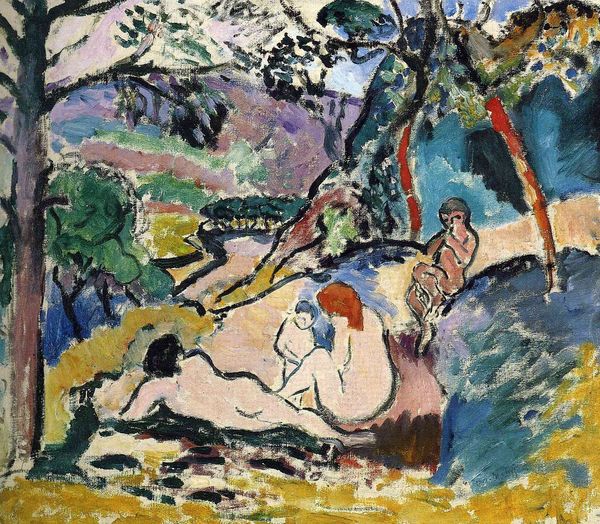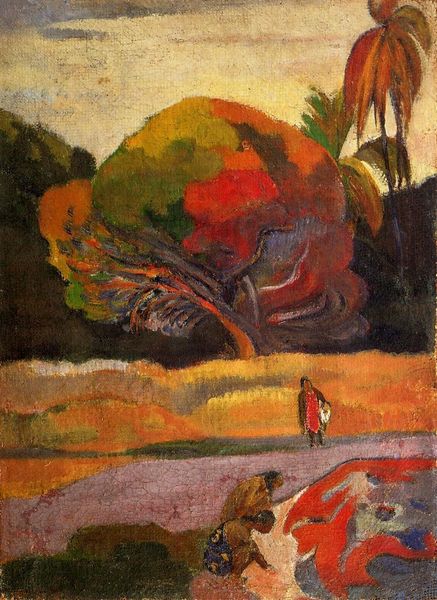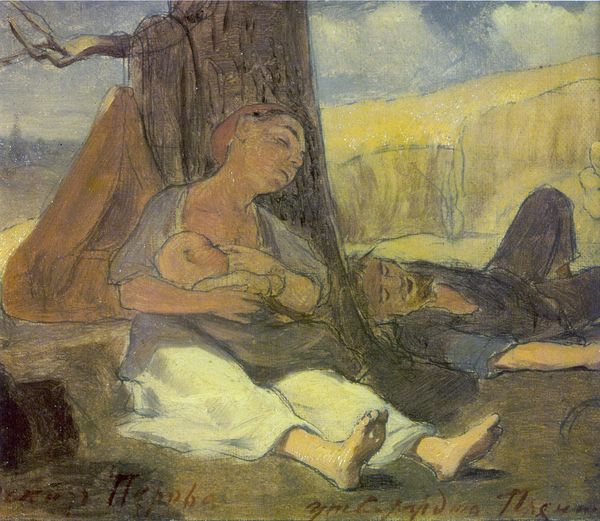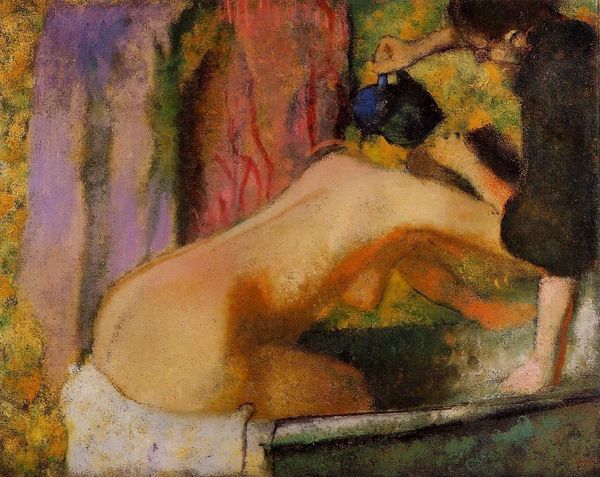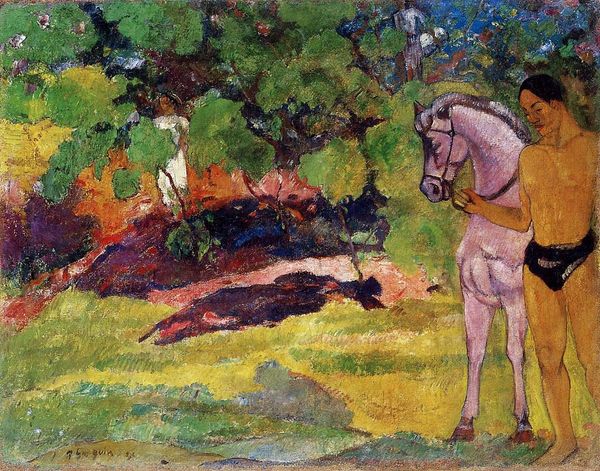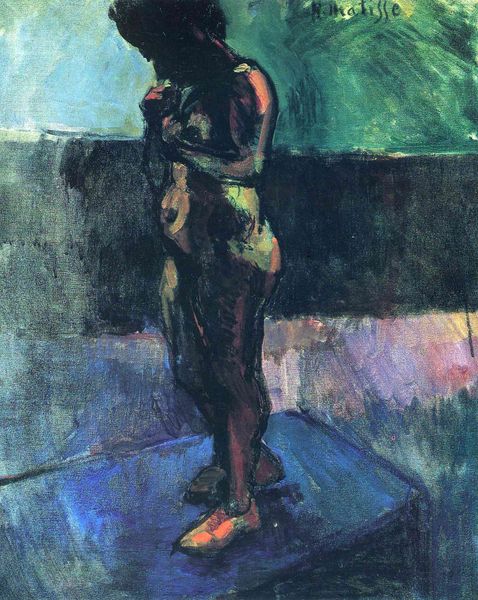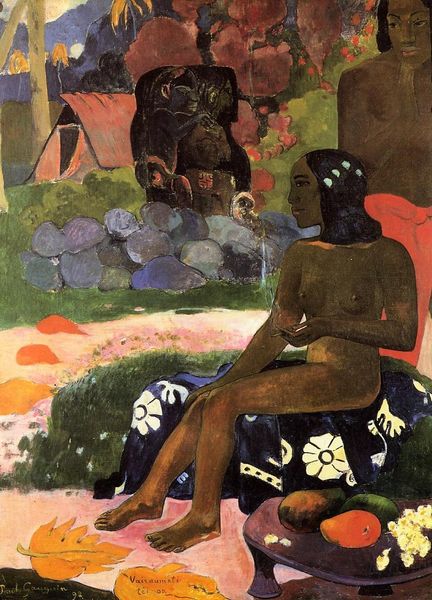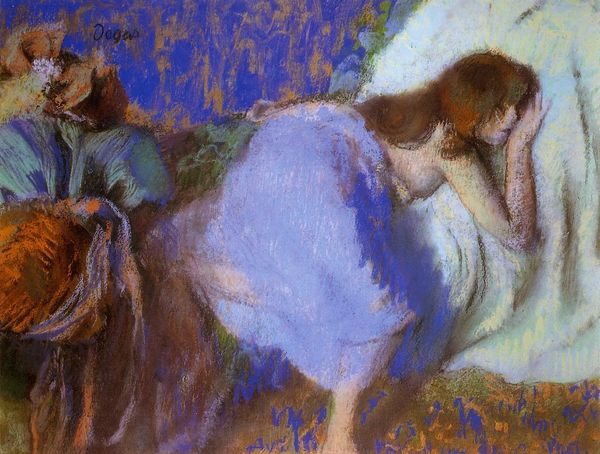
Copyright: Mark Rothko,Fair Use
Curator: Looking at Rothko’s “Rural Scene” from 1936, my first thought is how thick and palpable the paint is; you can practically feel the textures of the rural setting he's portraying. Editor: The muted tones evoke a feeling of quiet contemplation for me. It presents a specific vision of rural life that may resonate or contrast with lived realities depending on who is viewing. The figures meld into the scene as the work suggests an integrated sense of belonging and existence between the rural environment and the human beings situated within it. Curator: I agree; notice how Rothko has layered oil paint, in this plein-air landscape, in short, visible strokes. It's as if he's inviting us to consider the sheer physicality of artistic creation itself— the labour behind making the image is so present. Editor: Right, and I find that technique politically charged, if you will, because it prompts questions about the roles of agricultural labor, leisure, and social class during the Depression era, and I’m looking at that shack versus figures relaxing. Whose labor provides leisure to others? Curator: Yes! And how is the paint handled? Think of this in tandem with the broader economy of artistic production at that time: canvas prices, availability of materials, even the artist's own financial position impacts how the work takes shape materially and aesthetically. Editor: It certainly also feels important to situate this work within its sociopolitical and art historical moments, too. Is Rothko showing how figures who would most be directly impacted by labor also may embody connection with a peaceful setting, or how that rest, for certain members of the population, comes at the expense of laborers' own access? Curator: That reading shifts how we consider "beauty". Is beauty purely aesthetic or entangled in social dynamics and economic relations? How do labor practices literally inscribe themselves onto the surfaces we read as "art"? Editor: Absolutely, that shift reframes it all. I walk away from "Rural Scene" questioning, whose narratives are prioritized and aestheticized—and to what ends? Curator: And seeing that act of questioning *itself* as a crucial part of this painting's lasting value for the modern museum visitor.
Comments
No comments
Be the first to comment and join the conversation on the ultimate creative platform.
